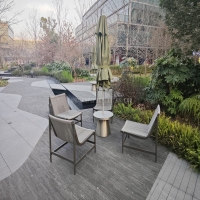Welcome to the website for landscape facilities products and knowledge.
How does the table’s design facilitate easy disassembly for storage or transport?
Modern table designs incorporate several intelligent features that facilitate straightforward disassembly and reassembly processes. Many contemporary tables utilize tool-free mechanisms such as twist-lock connectors, snap-fit joints, and magnetic attachments that allow users to quickly separate table components without requiring specialized equipment. These innovative connection systems are engineered to maintain structural stability during use while permitting rapid breakdown when needed for storage or transportation.
The materials selection plays a crucial role in disassembly-friendly designs. Lightweight yet durable materials like aircraft-grade aluminum, reinforced polymers, and engineered wood composites reduce overall weight while maintaining strength. Many manufacturers incorporate foldable elements, particularly in table legs and support structures, that collapse compactly to minimize the storage footprint. Some designs feature telescoping legs that retract into the table frame, while others employ hinged sections that fold flat like a book.
Modular table systems represent another advancement in disassembly efficiency. These designs consist of interchangeable panels and components that connect through standardized docking systems. The modular approach not only simplifies the disassembly process but also enables customization of table size and configuration according to specific needs. Many such systems incorporate color-coded or numbered connection points that guide users through correct assembly and disassembly sequences, eliminating confusion.
Storage and transport considerations are integral to the design process. Engineers carefully calculate joint tolerances and connection point durability to withstand repeated assembly cycles. Protective elements like rubberized edges, corner guards, and integrated carrying handles are often incorporated directly into the table's design. These features safeguard both the table components and the user during transportation while ensuring that all parts remain organized and accessible when disassembled.
The evolution of table design continues to prioritize user convenience through innovations in connection technology, material science, and spatial efficiency. These developments have transformed tables from static furniture pieces into dynamic, adaptable solutions that accommodate modern mobile lifestyles and space-constrained living environments without compromising on functionality or aesthetic appeal.
Related search:

Recommendation
Metal structure rattan chair without armrests for single person, with woven seat and backrest.